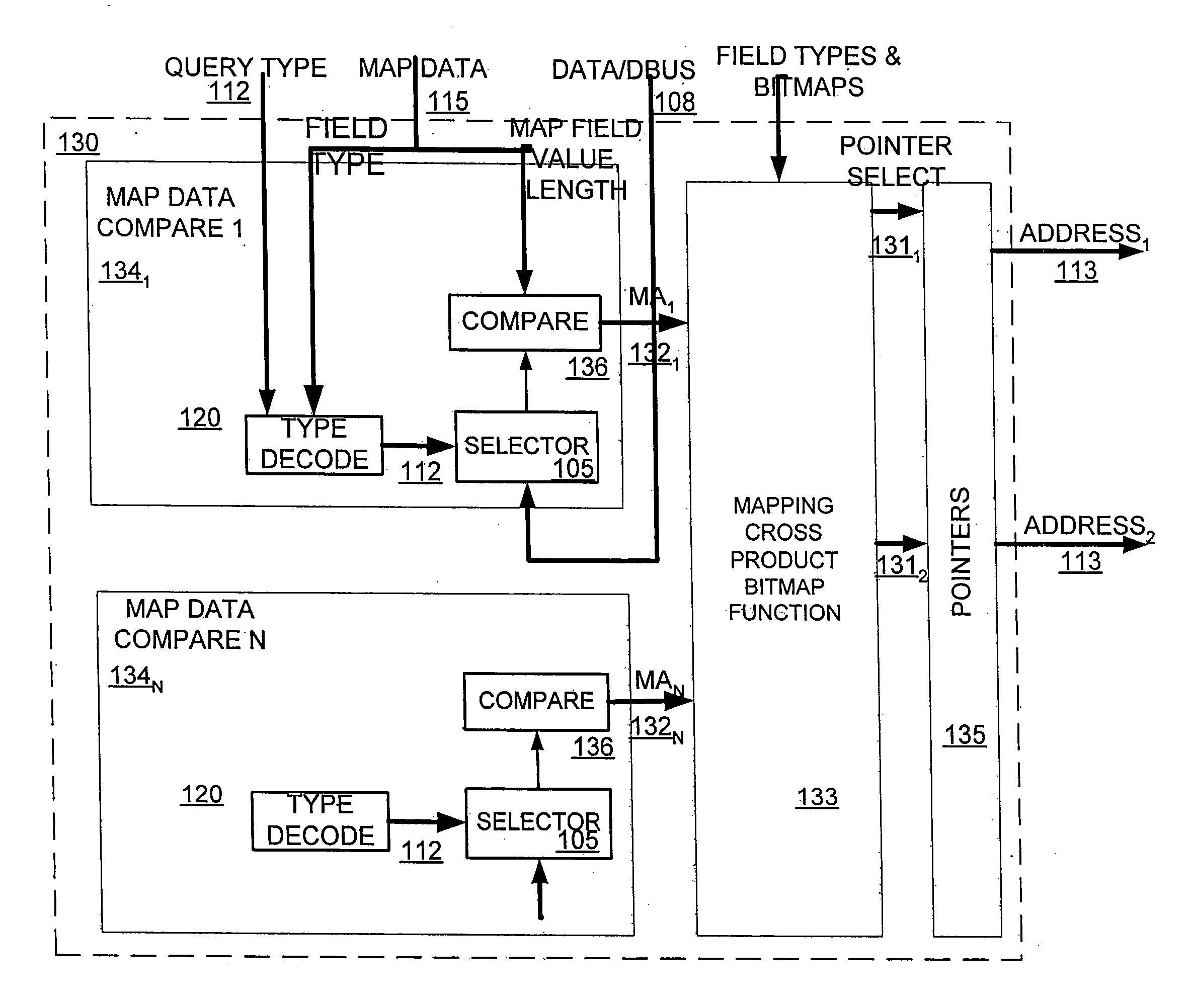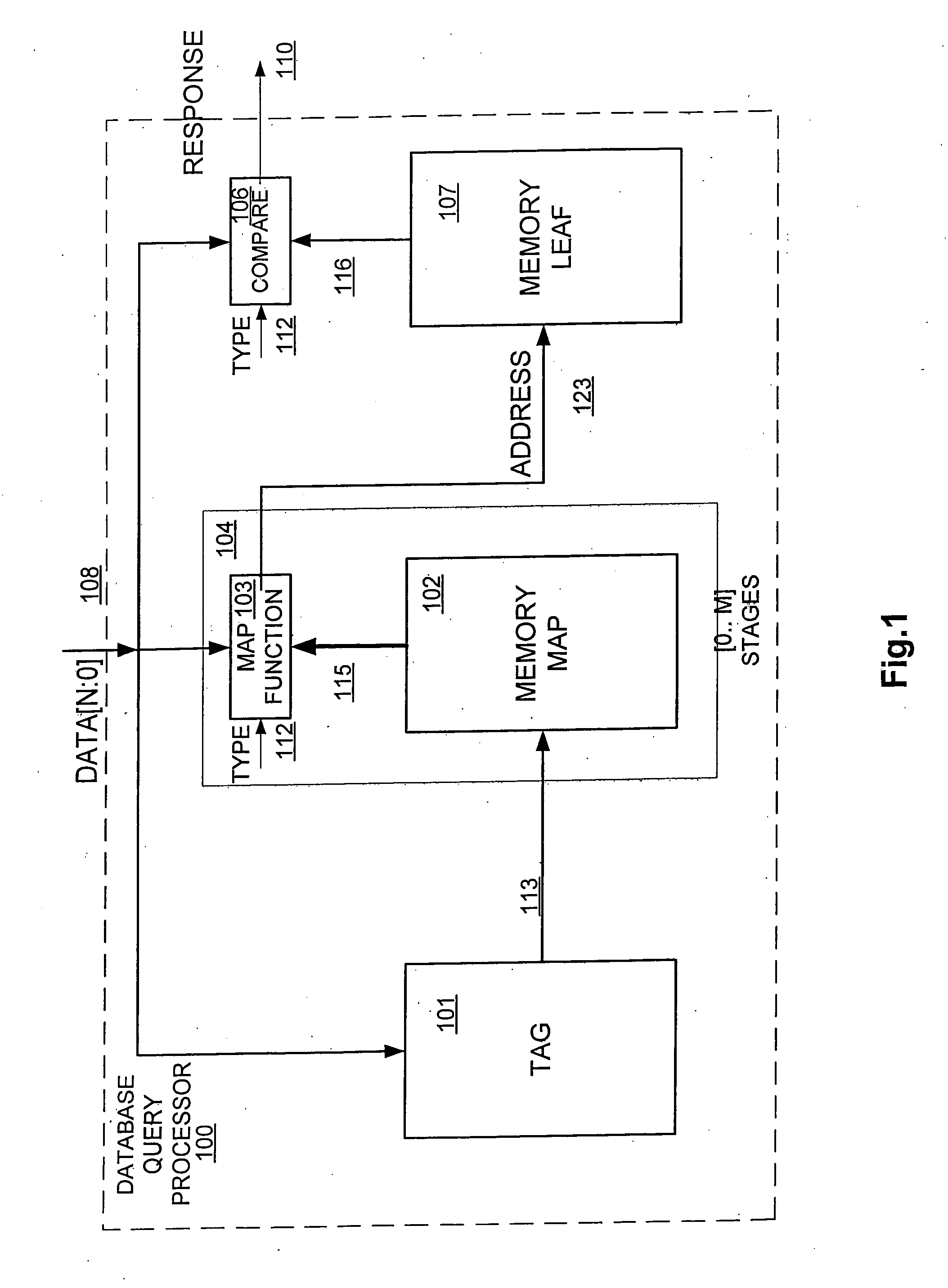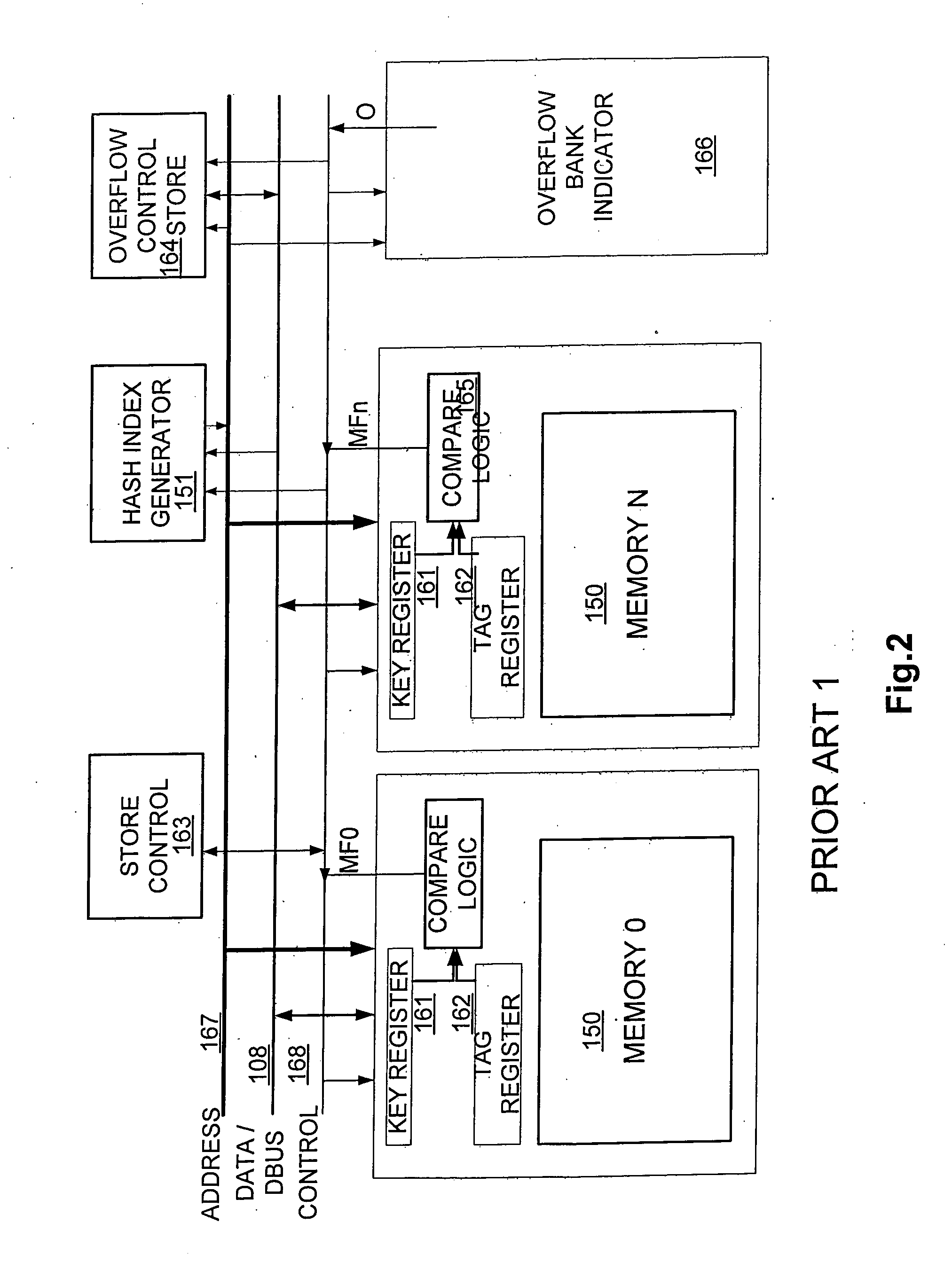Database query processor
a database and processor technology, applied in the field of information retrieval systems, can solve the problems of consuming a lot of power, tcams have a relatively high cost per database entry or record, and the access to records is relative slow, so as to accelerate the pattern matching application, increase the capacity, and speed up the effect of updating
- Summary
- Abstract
- Description
- Claims
- Application Information
AI Technical Summary
Benefits of technology
Problems solved by technology
Method used
Image
Examples
first example embodiment
[0093]FIG. 9 illustrates a preferred embodiment of a Database Query Processor (DQP) 200 in accordance with the present invention. The DQP 200 includes a pool of tag blocks 201, a pool of mapping blocks 202, a pool of leaf blocks 203, a query controller 205, an update controller 206, a memory management unit 207 and an associativity map unit 211. The query controller 205 is coupled to receive instructions over CMD bus 204 from a host device (e.g., general purpose processor, network processor, application specific integrated circuit (ASIC) or any other instruction issuing device).
[0094] The query controller 205 also receives the data bus 108; and controls operations of data path blocks (which store and process data): the pool of tag blocks 201, the pool of mapping blocks 202, the pool of leaf blocks 203, and the result processor 212; and the control units: the update controller 206, the memory management unit 207, and the associativity map unit 211. The query processor 205 distribute...
example embodiments
[0162] In one embodiment an integrated circuit device includes a CAM (TCAM inclusive) word that can be combined to be of wider width (1 to m times) such as 2 times, or 4 times or 8 times or 16 times or more, to store the BFS (Breadth First Search) component of a trie which generates an index to access a mapping memory. A mapping memory is accessed by an index generated by the CAM array, which stores a plurality of values to store a trie structure; and a plurality of pointers. A mapping path processing logic compares values stored in trie structure with query key components and generate pointers to a next mapping stage or leaf memory. In one embodiment, there is also multiple stages of mapping memories and associated mapping path processing logic. The leaf memory accessed by pointer storing a plurality of partial or full records of state tables or grammar or statistical or compute instructions. A result generator that compares query key components with record stored in leaf memory an...
PUM
 Login to View More
Login to View More Abstract
Description
Claims
Application Information
 Login to View More
Login to View More - R&D
- Intellectual Property
- Life Sciences
- Materials
- Tech Scout
- Unparalleled Data Quality
- Higher Quality Content
- 60% Fewer Hallucinations
Browse by: Latest US Patents, China's latest patents, Technical Efficacy Thesaurus, Application Domain, Technology Topic, Popular Technical Reports.
© 2025 PatSnap. All rights reserved.Legal|Privacy policy|Modern Slavery Act Transparency Statement|Sitemap|About US| Contact US: help@patsnap.com



